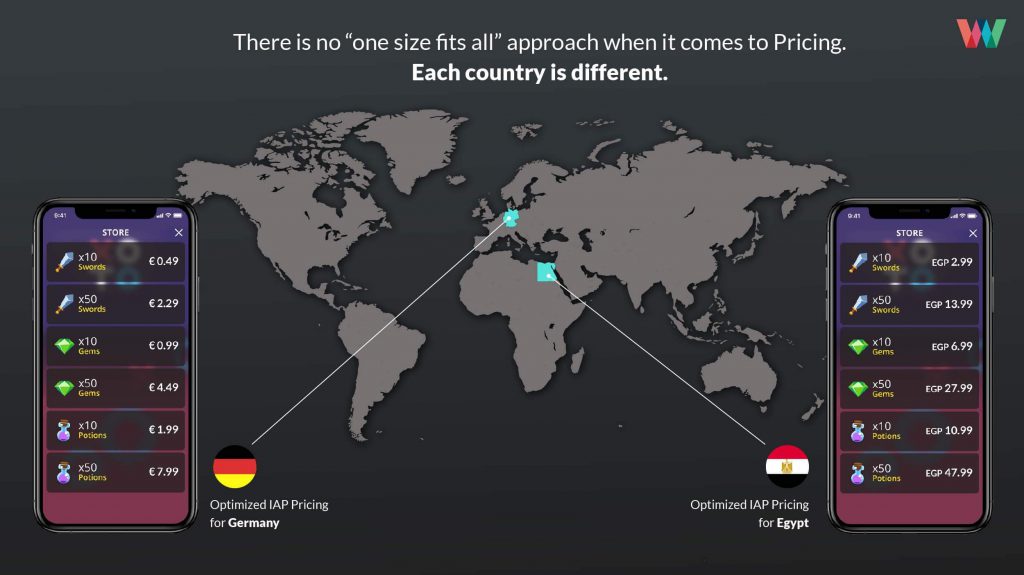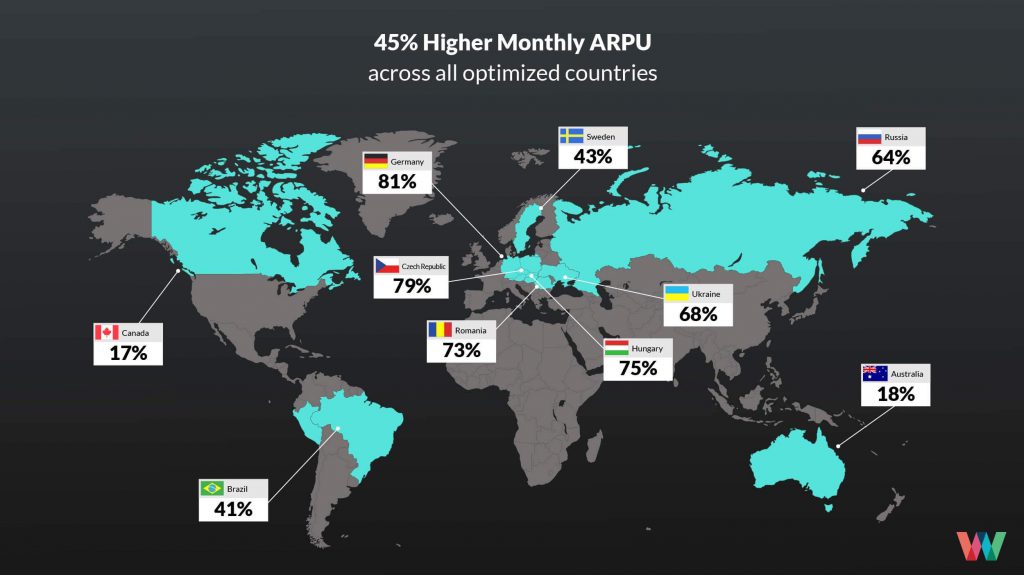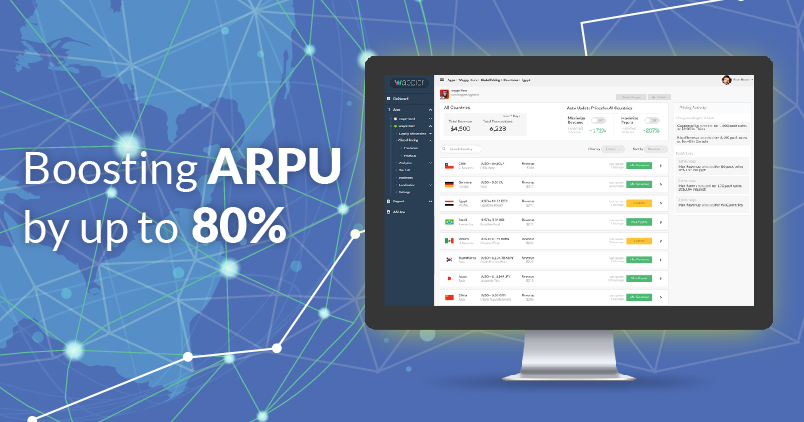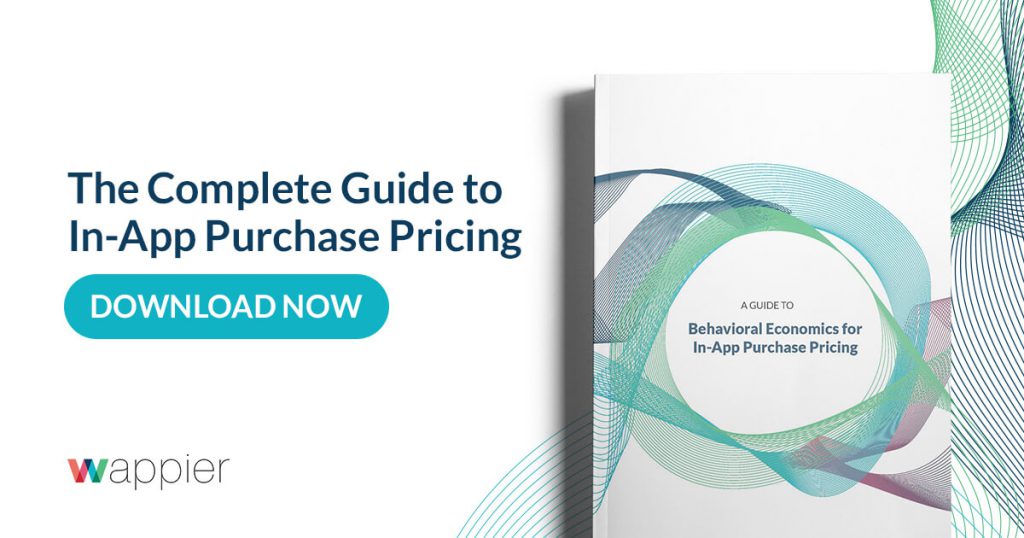Global Pricing can boost monthly ARPU and drive incremental revenue with minimal engineering effort — no SDK required. Here’s how it works.
In the first half of 2019, global mobile game revenue reached a staggering $39 billion — a more than 15% increase compared to H1 2018. While this growth is certainly impressive, it’s also clear that things are slowing down. Between H1 2018 and H1 2017, mobile game revenue grew by 27.8%. This is happening, in part, because mobile game publishers are still only optimizing in-app purchase revenue in a few markets — notably, in China and the United States. As the mobile game market reaches maturity, it’s time to start thinking on a global scale.
Looking ahead, the majority of growth will likely occur outside of China and the US. Data from SensorTower corroborates this: South America, Africa, and the Middle East are each projected to grow more than 200% by 2023. What’s more, mobile game developers and publishers have yet to fully tap opportunities in European countries, which are projected to grow by more than 150%. To fully take advantage of this next wave of growth, game developers must learn to maximize IAP revenue on a per-country basis.
Right now, most game developers price once for the US, and let the app stores merely auto-adjust pricing based on current exchange rates. Unfortunately, there’s no one-size-fits-all when it comes to in-app-purchase pricing. All players around the world cannot afford to get the “Gold Pack” for $4.99, or the equivalent amount in their local currency. The exchange rates auto-generated by the app stores are not sufficient to drive payer conversion. Mobile publishers must develop a deep understanding of local markets and pick prices taking into account the demand function in each specific country. This practice, called Global Pricing, has the potential to boost monthly ARPU by up to 80%. Here’s how it works.
What is Global Pricing?
Global Pricing is the practice of using predictive analytic econometric models to auto-adjust the price of in-app products for each country. The models ought to incorporate the following factors:
- Macroeconomic factors like GDP, propensity to consume, exchange rate, and unemployment rates
- Microeconomic factors like smartphone prices and the cost of housing
- Game market statistics like revenue and growth projections and the total number of users
- Mobile technology statistics, such as smartphone penetration, and mix of iOS vs Android
- Device and game context, such as device type or game genre
- Player and gameplay context like DAU, MAU, level, events per day, or purchase history
- Temporal elements like seasonality and trends
The App Store and Google Play stores provide auto-generated conversion rates for IAP pricing, but more often than not, these prices don’t have crowd appeal. While a $4.99 bundle of 50 diamonds might seem reasonable to US players, those in Egypt would balk at an 82 EGP price tag. That amount could buy a full meal at a restaurant in downtown Cairo. That’s why mobile developers must identify the price elasticity curve and price each in-app product accordingly. If you apply this methodology to Egypt, for example, you will find that the exchange rate ought to be about 16 cents on the dollar. That $4.99 bundle should actually translate to just 13 EGP.

Users in different countries cannot afford the same things. A successful IAP pricing strategy adjusts dynamically to each country's spending power.
Flat pricing means leaving money on the table
Global Pricing doesn’t just mean lower prices — it means pricing to the demand elasticity curve. This strategy is applicable in every market, even in economically robust countries such as Germany or Finland. In fact, because the Eurozone utilizes a single currency, European countries present a great opportunity. Geography and culture are better indicators of price tolerance than exchange rates alone.
Developers can’t afford to let this opportunity pass by. Even those with limited engineering resources can achieve meaningful results — without even integrating an SDK. Global Pricing, as implemented by wappier, has been shown to increase ARPU by up to 80% and boost incremental monthly revenue by 30-60%. What’s more, IAP offers that are priced appropriately for each country foster a feeling of fairness in the community and keep players engaged.
The methodology
Global Pricing is challenging at best to maintain when done manually. Developers ought to leverage machine learning algorithms and a platform approach to auto-adjust prices on a regular basis. Revenue regression models and micro-level nonlinear demand estimation models will be the backbone of the engine. Here’s an overview of the methodology.
- First, build an international macroeconomic model to pin down a generic, optimal country price level.
- Second, build a micro model using historical data on purchases and activity in the game at hand and combine with the macroeconomic model to derive an approximately optimal game-specific price index.
- Apply the approximately optimal prices for every good and bundle, for every country, using as input the price index and best practices from behavioral economics.
- Now, it is time for economic and econometric methods to hand over the process to statistical and machine learning. This involves fine-tuning prices via a multi-armed bandit approach. This creates enough variation in the dataset to estimate the demand curve and price elasticity curves. After the demand curve has been estimated, convex optimization tools are employed to determine the optimal prices in each country.
- Closely monitor, review and adjust pricing as needed, usually in intervals that are multiples of the week, based on current macroeconomic trends, exchange rate fluctuations, seasonality and trends in gameplay data.

The results
Global Pricing Optimization is well worth the investment. At wappier, we’ve found that these tactics can generate massive new revenue. One case study for NBA General Manager, a mobile sports game, showed that optimizing 2,000 price points across 19 countries resulted in monthly ARPU uplifts between 25-297%.
In another case study, wappier helped a mobile poker app achieve an all-time high of total monthly revenue. Although the app was top-rated, their team didn’t have the needed resources — time, tools, and data science expertise — to optimize pricing beyond North America. The team enlisted wappier to analyze and auto-adjust pricing across 17 target countries. Since going live, the app has seen stellar results: Monthly ARPU across all target countries increased by an average of more than 45% over a whole year of operation. The most significant improvements occurred in European countries. Notably, Germany saw an 81% improvement in monthly ARPU.

Case Study: 45% Higher Monthly ARPU for Top Mobile Poker App
Go global
Global Pricing is a fast and easy way to boost IAP revenue in every market. When implemented via machine learning-powered automation, mobile game developers see major results. Our all-in-one optimization engine is the ideal global pricing solution: It increases revenue and LTV #automagically. The wappier platform uses machine learning and predictive analytics to move beyond local currency exchange rates and identify users’ willingness to pay in each country.
wappier is on a mission to build the Intelligent Revenue Management technology that app and game developers need in order to maximize the value of their existing users. Curious to see it in action? Contact our team and schedule a walkthrough today.







